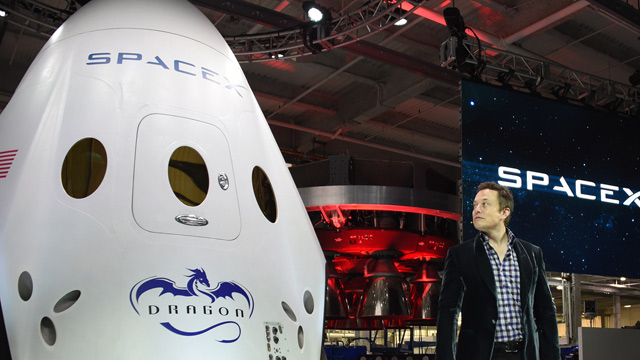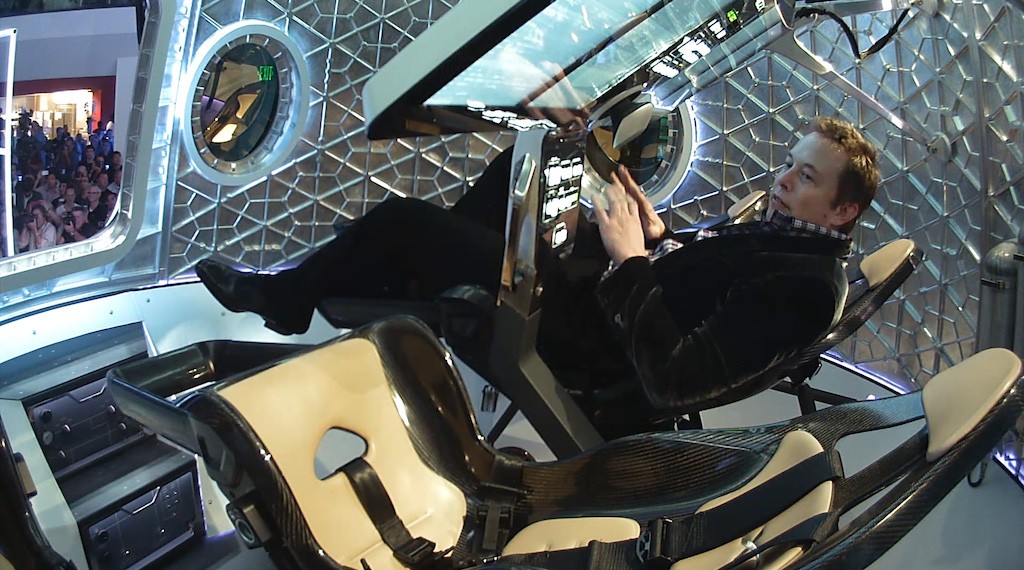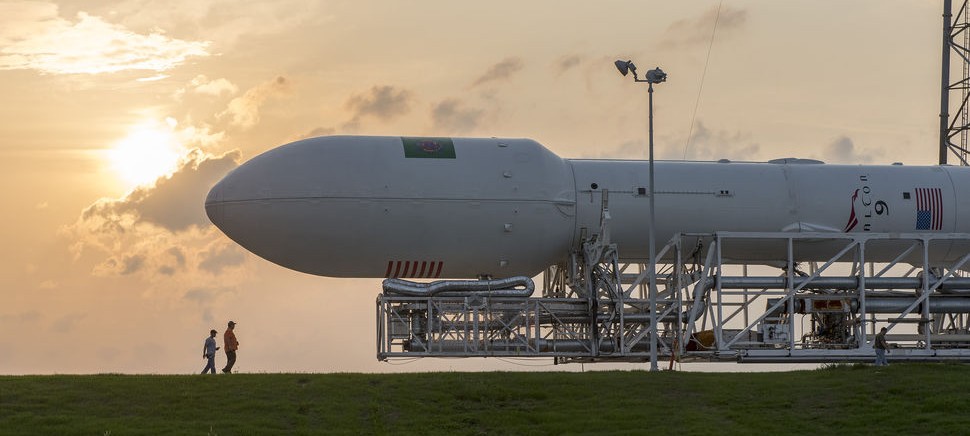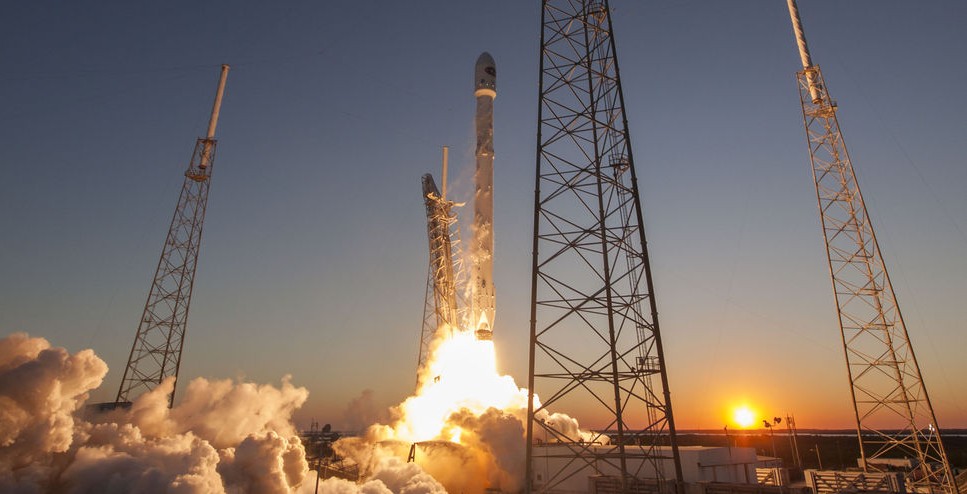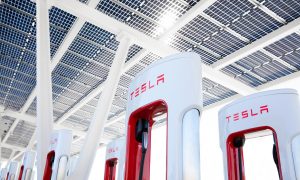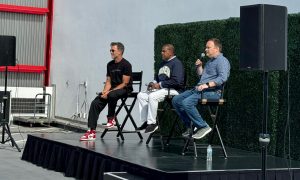As Ashlee Vance tells it, one wall of Elon Musk’s office at SpaceX headquarters in Hawthorne, California, contains two posters of Mars. On the left is Mars as it exists today – a frozen, lifeless orb. On the right is Musk’s vision of Mars as it could be — a happy place inhabited by humans who frolic on verdant continents surrounded by oceans.
“I would like to die thinking that humanity has a bright future,” he tells Vance while eating cookies and cream with sprinkles on top. “If we can solve sustainable energy and be well on our way to becoming a multi-planetary species with a self-sustaining civilization on another planet—to cope with a worst-case scenario happening and extinguishing human consciousness— then I think that would be really good.” No one has ever accused Elon Musk of thinking too small.
At the turn of the 21st century, Musk had two Martian fantasies. One was to send a colony of mice to the Red Planet and bring them back again, along with their interplanetary babies. The other involved building a greenhouse on Mars and letting Earthlings see the plants inside grow over the internet. Each venture required at least one if not two rocket ships.
He and a coterie of friends traveled twice to Moscow, once in 2001 and again in 2002, trying to purchase surplus Russian rockets that could be refurbished for the Martian missions. The first time did not go well. Recalls Jim Cantrell, one of the team that traveled to Moscow with Musk, “One of their chief designers spit on me and Elon because he thought we were full of shit.” On the second excursion, Musk became convinced the Russians he was meeting with were only interested in fleecing a gullible American with too much money and too few brains.
On the way home from the second failed mission, Musk astonished his team by announcing, “Hey, guys, I think we can build this rocket ourselves.” In June 2002, Space Exploration Technologies, popularly known as SpaceX, was formed to build a cheaper rocket that could carry small payloads into space for paying clients on an average of once a month. The only problem? It had no rocket.
Such trifles were never matters to hold Elon Musk back. He assembled a team of committed rocket engineers and set about accomplishing, with millions, what NASA spent billions doing. Musk’s principle talent, apart from concocting outrageously impossible dreams, is finding people to work for him who are ready, willing and eager to give up all semblance of a normal life in exchange for insane working hours in remote locations. One test launching area was set up in the middle of Texas and another on far away Kwajalein Island, the largest island in an atoll between Guam and Hawaii that is part of the Marshall Islands.
“I would like to die thinking that humanity has a bright future”
SpaceX CEO, Elon Musk
Musk is not a man without a sense of humor. He dubbed his new rocket Falcon 1, paying homage to the Millennium Falcon of Star Wars fame. On its first flight on March 24, 2006, it crashed back to Earth after only 25 seconds. SpaceX employees dutifully donned scuba gear to retrieve some of the pieces from the ocean and set about rebuilding for another attempt.
Musk responded by hiring more engineers and starting work on a brand new rocket, the Falcon 9, that featured one large central rocket surrounded by 8 smaller rockets. Despite the failure of Falcon 1, Musk was already busy positioning the company to bid on NASA contracts to resupply the International Space Station.
On September 1, 2008, Falcon 1 flew its first successful mission. SpaceX was a viable commercial company at last but one that was rapidly going broke. At the end of 2008, Musk knew he would have to choose between SpaceX and Tesla. Alone, one of them might survive. Together? The odds were, both would fail. Musk worried that Tesla would be bought out by one of the Big Three automakers and become just a small part of a giant company.
Later in 2008, Tesla was within hours of defaulting on its payroll obligations. If that happened, Musk’s personal fortune would be gone, along with Tesla and SpaceX. He asked for help from venture capital group VantagePoint but was rebuffed. That’s when Musk put all his chips on red and let them ride.
With all of his dreams and aspirations on the line, Musk executed a colossal bluff. He told investors he would put in $40,000,000 of his own fortune to keep the business going — $40,000,000 he didn’t have. Based on his assurances, other investors agreed to put up $20,000,000 more in financing and the crisis passed. A few weeks later, NASA awarded SpaceX a $1.6 billion contract to do twleve ISS re-supply missions.
Antonio Gracias, a Tesla and SpaceX investor and one of Musk’s closest friends, watched all of this at close hand. He says 2008 told him everything he would ever need to know about Musk’s character. “He has the ability to work harder and endure more stress than anyone I’ve ever met,” Gracias says. “What he went through in 2008 would have broken anyone else. Most people who are under that sort of pressure fray. Their decisions go bad. Elon gets hyperrational. He’s still able to make very clear, long-term decisions. The harder it gets, the better he gets.”
Today, SpaceX launches an average of one rocket a month, carrying payloads for many companies and several nations. Its prices undercut those of Boeing, Lockheed Martin, and Orbital Science by a wide margin. Many of its competitors rely on Russian and other foreign suppliers but SpaceX makes its machines from scratch in the U.S.
Its clientele includes Canadian, European, and Asian customers and it has more than 50 flights planned over the coming years worth more than $5 billion. The company remains privately owned, with Musk as the largest shareholder. SpaceX is profitable and is estimated to be worth $12 billion.
The Falcon 9 has gone from a fantasy to SpaceX’s workhorse. Painted pure white with only an American flag and the SpaceX logo adorning its sides, there’s nothing particularly flashy looking about the Falcon 9. It’s just an elegant, purposeful machine. And to think that for a period of weeks just a few years ago, it’s ability to lead mankind into the dawn of commercial space travel almost died before it was ever born, thanks to a bluff so bold and so daring, it would leave most of us breathless.
Jimmy Buffett once sang, “Read dozens of books about heroes and crooks, and I learned much from both of their styles.” Which one is Elon Musk? Read Ashlee Vance’s book and make up your own mind.
Source: Bloomberg

